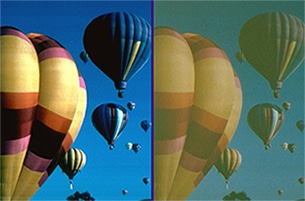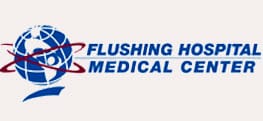Cataracts
What is a Cataract?
A cataract is a common condition that causes a clouding of the eye's natural lens, and affects millions of people each year, including more than half of all Americans over the age of 65. Cloudiness develops as a result of a buildup of protein in the lens.
Cataracts cause a progressive, painless loss of vision. Although cataracts more commonly affect senior citizens, the lens clouds naturally as we age, causing almost everyone to experience a gradual reduction of vision over time. However, cataracts that significantly reduce vision and interfere with daily activities are not considered part of the natural aging process and are a condition that requires prompt medical attention.
What Causes Cataracts?
The exact cause of a cataract is unknown, although it may be a result of injury, genetic background, certain medications, illnesses (such as diabetes), and prolonged exposure to ultraviolet light and smoking.
Diagnosing Cataracts
Dr. Levine may perform a series of tests in order to diagnose a cataract. A dilated eye exam will be performed to test the vision and to examine the condition of the lens and other parts of the eye. Dr. Levine will also perform tonometry, a procedure that measures the pressure in the eye. He will determine if a new glasses prescription could improve your vision, and will also measure how glare and reflections affect your eyesight.
Symptoms of Cataracts
Patients with cataracts often do not experience any symptoms when the condition first develops. Cataracts will continue to progress with no apparent pain, although patients may experience:
- Blurred or hazy vision
- Double vision
- Poor vision in bright light
- Seeing halos around lights
- Poor vision at night
- Yellowish tinged vision
- Frequent changes in eyeglasses or contact lens prescription
Treatment of Cataracts
If visual impairment begins to interfere with your ability to read, work or do the things you enjoy, you may want to consider cataract surgery to restore your vision. Cataract surgery is the most commonly performed surgical procedure in the United States and can be performed quickly and easily with an overall success rate of over 97 percent and with minimal risk of complications.
Cataract Surgery in Queens, NY
Cataract surgery is a minimally invasive procedure that involves numbing the eyes with anesthesia and then making a tiny incision into which an ultrasonic probe is inserted. The probe breaks up, or emulsifies, the cloudy lens into tiny pieces and then suctions them out of the eye. Once the cloudy lens has been removed, a new crystal clear plastic lens is implanted into the eye. This lens is known as an intraocular lens (IOL), and it is inserted through the same incision through which the old lens was removed.
Surgery usually takes only a few minutes to perform and is painless for most patients. Dr. Levine performs the latest small incision no-stitch cataract surgery that allows very fast healing and quick visual recovery. Dr. Levine performs most of his cataract surgery at two convenient Ambulatory Surgical Centers, and we are happy to provide round trip transportation on the day of surgery for the patient and their accompanying friend, relative, or assistant. After the procedure, you will be asked to rest for a short while and you can then return home. Most patients are completely comfortable after the surgery, but a few may experience itching, mild soreness, slight tearing, and sensitivity to light and touch for a few days. Dr. Levine will prescribe eye drops to speed the healing process, help with any discomfort, and reduce the risk of infection.
There are several different intraocular lenses available to help each patient achieve the best possible results from his or her cataract surgery. In the past, cataract surgery only involved monofocal lenses, which could only focus on objects near or far, and which could not adjust to accommodate varying distances. Patients with monofocal lenses still had to rely on glasses or contact lenses after surgery in order to see clearly at all distances (especially for reading).
Today, however, multifocal lifestyle IOLs (such as the Technis and ReStor) allow for full vision correction at near, intermediate, and far distances, completely eliminating the need for eyeglasses or contact lenses in about 75% of patients. Accommodating IOLs (such as the Crystal Lens) allow the patient excellent distance vision as well as improved computer and intermediate sight. Toric intraocular lenses and limbal relaxation techniques can correct astigmatism and allow clearer vision after the surgery. Dr. Levine also uses the ORA System by Wavetec. This new device performs extremely accurate real-time measurement of the optics of the eye during cataract surgery. With this information, Dr. Levine is able to fine tune the intraocular lens power and more precisely correct for astigmatism so that the patient can achieve the absolute best visual result. Finally, Dr. Levine prefers to implant aspheric lenses whenever possible. These advanced technology lenses correct small irregularities which occur in everyone’s eyes as a result of aging. By using aspheric lenses, Dr. Levine is frequently able to restore visual quality to the way it was when you were in your twenties, before age-related irregularities developed. These lenses allow you to see the world with a new, high-definition clarity which was not possible in the past with older style lenses. They reflect Dr. Levine’s philosophy to provide you with the best technology available and to spare no effort so that you can achieve the best visual result.
Laser Cataract Surgery
The LenSx® Laser from Alcon is the first femtosecond laser to receive FDA approval for use in cataract surgery.
The LenSx® Laser offers three-dimensional, high-resolution images that map the unique eyes of each patient. These images, combined with the computer-captured measurements and information about the eyes, allow the surgeon to achieve greater accuracy, precision, and customization than ever before.
The LenSx® Laser is optimized with true image guidance, helping the surgeon determine the best location and dimensions for incisions. The bladeless femtosecond laser pulses to create incisions in the lens capsule, crystalline lens, and cornea with a high level of accuracy. The LenSx® Laser is an effective technological advancement that ensures the highest level of precision throughout every step of the cataract surgical procedure.
Risks and Complications of Untreated Cataracts
If left untreated, cataracts will worsen over time and may lead to permanent vision loss or even blindness. It is important to see your eye doctor regularly in order to detect cataracts as early as possible and to plan an effective treatment method.
Although cataract surgery is considered safe, there are certain risks associated with any surgery. Some of these risks may include infection, swelling and/or bleeding. Fortunately, however, most patients undergo this procedure without any complications at all.
Schedule a Consultation for Cataract Surgery in Queens, NY
To learn more about Cataracts, please call us today or click here to schedule an appointment with one of our doctors.





